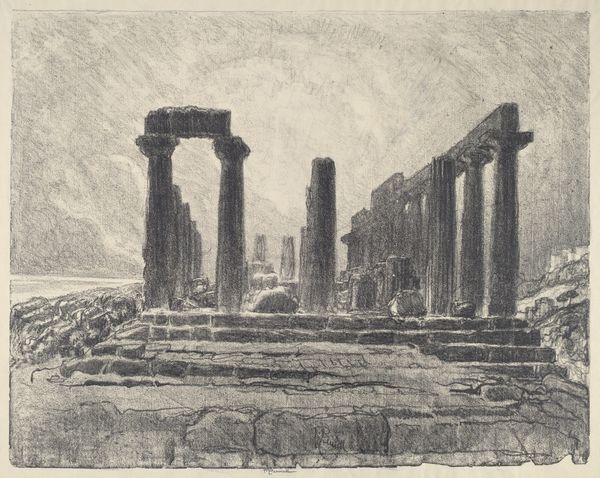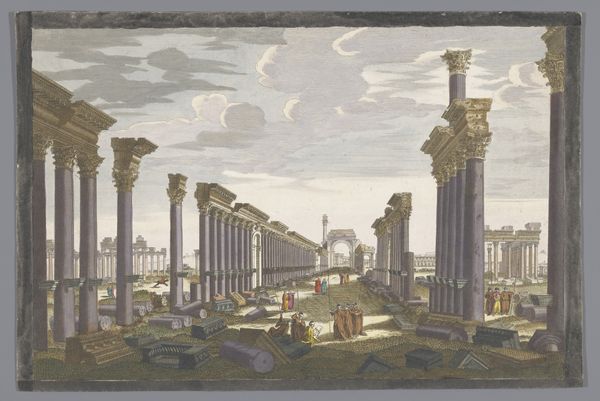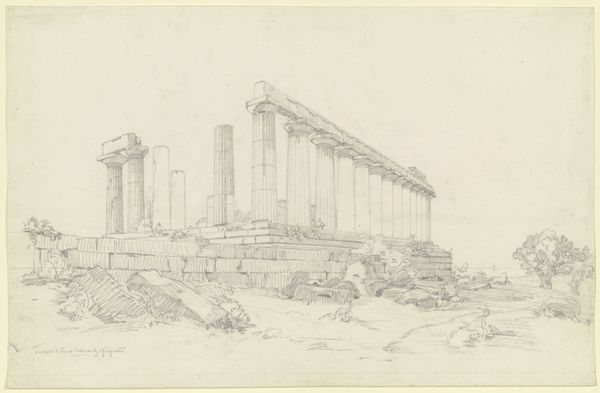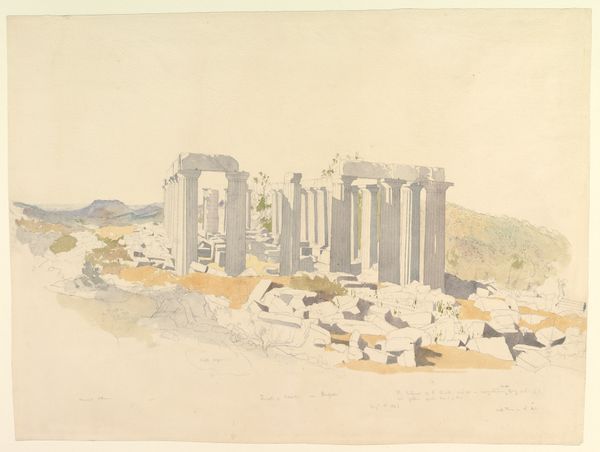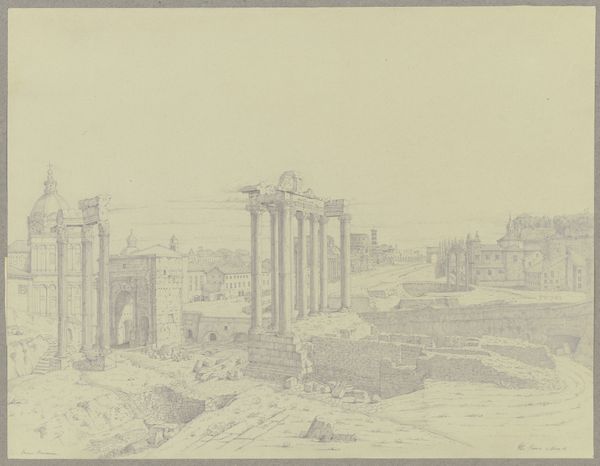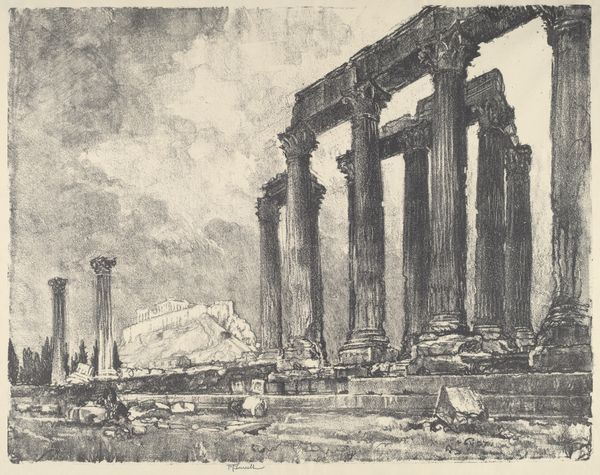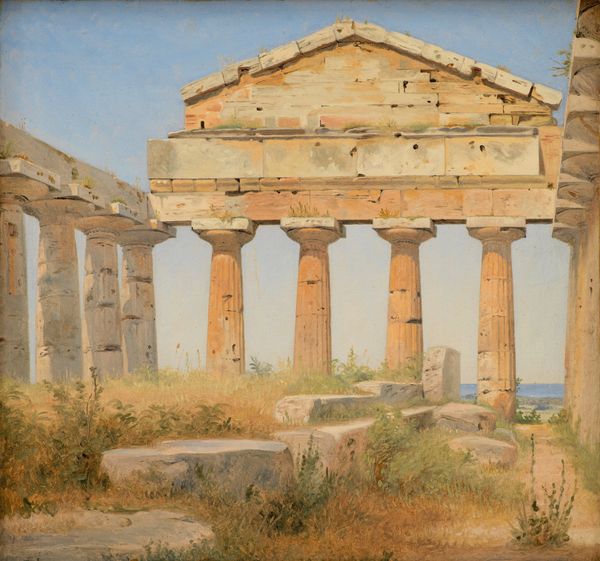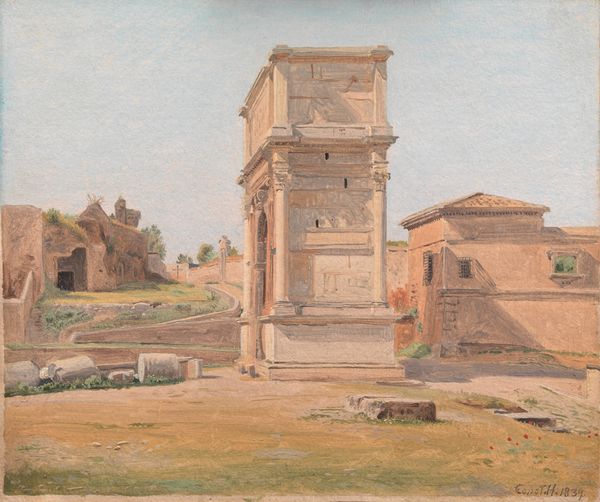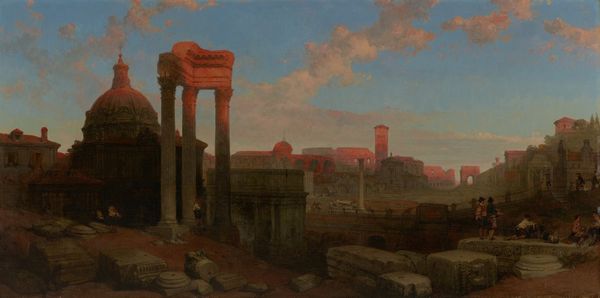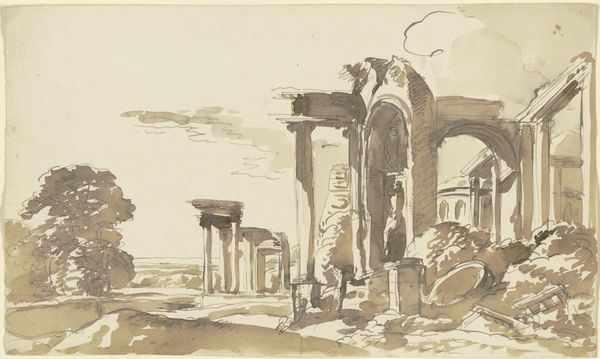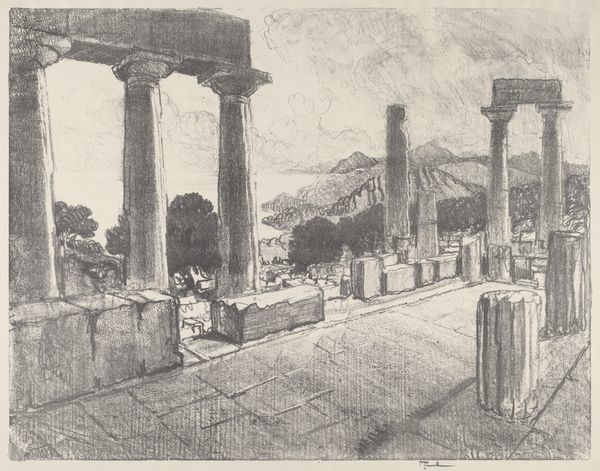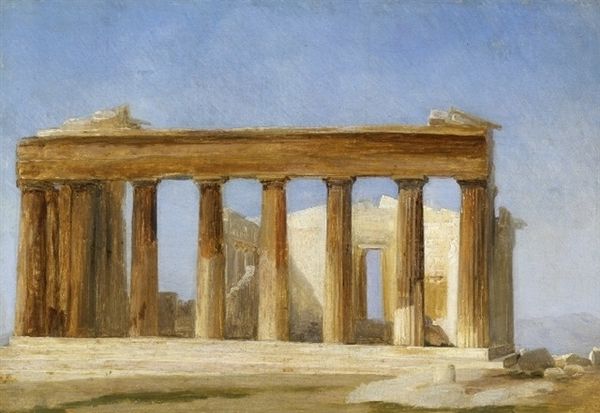
Girgenti (The Temple of Juno Lacinia at Agrigentum) 1881
0:00
0:00
painting, watercolor
#
painting
#
greek-and-roman-art
#
landscape
#
classical-realism
#
oil painting
#
watercolor
#
coloured pencil
#
classicism
#
cityscape
#
academic-art
#
watercolor
Dimensions: 15 x 21 7/8 in. (38.1 x 55.6 cm)
Copyright: Public Domain
William Stanley Haseltine made this watercolor painting of the Temple of Juno Lacinia at Agrigentum in 1861. It's a straightforward example of the artist's oeuvre, but it is worth thinking about its materiality. Haseltine was working in the tradition of the picturesque, traveling to capture romantic views. But unlike a painter working in oils, he embraced the portability and immediacy of watercolor. Think of the difference between erecting a stone temple, and sketching its likeness. One demands intensive, collective labor; the other a solitary act of observation. The thin washes of pigment create a sense of light and atmosphere, befitting the ruinous subject. The way the light glances off the stone is almost photographic, yet this belies the work and skill required to achieve this effect. The artist invites us to contemplate the scene before him, yes, but also the changing modes of production that underpinned it. What, after all, is the relationship between architecture and art?
Comments
No comments
Be the first to comment and join the conversation on the ultimate creative platform.
